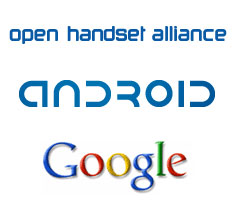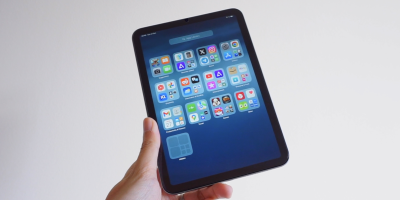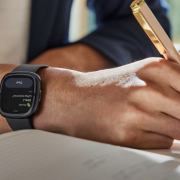Developers outnumber us all.
No device manufacturer can hope to write all the software that a person could conceivably need. We need third-party developers to write the apps users want, so the Android Open Source Project aims to make it as easy and open as possible for developers to build apps.
We’re just a few months away from the 5th Anniversary of one of the most significant day in our digital lives: the announcement of the Open Handset Alliance, and the birth of Android as we know it. And, rightly so, there’s a lot of excitement in the build up to the day.
However, most of the excitement is related to the rumors of 5 Nexus devices being announced as part of the celebration. However awesome that sounds, it’s not what I really want on November 5. What I want, more than anything else, is an attack on the biggest issue that has plagued the platform during it’s existence: updates.
Google has acknowledged the problem before, and even announced the Android Update Alliance at I/O 2011. Unfortunately, that was all we ever heard of the Alliance. It’s too early to tell if the Platform Developer’s Kit would prove to be a useful tool.If yesterday’s rumors about a Jelly Bean update for S III coming as soon as next month has anything to do with it, we’re finally on the right track.
However, maybe I’m just greedy but I want something more. When I read about HTC saying no to a Desire HD ICS update, it riled me up. As I’ve said in the past, the phone is more than capable of running ICS. I use a T-Mobile myTouch 4G, or the HTC Glacier as it was codenamed, which has the exact same internals as the DHD. I’m running an ICS ROM from XDA and despite some issues (the camera’s still not perfectly fine) it is far better than their stock Gingerbread ROM or even CM7. I went back to Gingerbread for a while when I felt I couldn’t live without a fully functional camera, but I missed the snappiness of ICS and returned to it. And I’ve been using it since mid-March.
This is where the quote at the beginning comes into it. While Google’s statement was in context with app developers, the same can be said of ROM developers. The manufacturer’s need to realize this and do one simple thing that could significantly improve the situation: when announcing that a device will not receive the latest version of Android, they must commit to releasing all proprietary code, primarily drivers, that can be used by developers to create their custom ROMs.
The way I see it, manufacturers have nothing to lose from this, and it greatly helps the community that has been struggling to reverse engineer several drivers that are necessary for smooth running ROMs. Users who are comfortable with flashing their own software can then choose to do, and would typically not bear any ill-will towards the manufacturer for having failed to provide an update on their own. If the manufacturer wishes, they can even use any of these ROMs as a base for their own update if they realize that the 3rd party developer has successfully tackled a problem they weren’t able to themselves.
I’d like to say that they must commit to future-proofing devices for at least a particular duration (say the length of the contract for $150+ device, a year for those that cost less), but that would be difficult to enforce, and I’m pretty certain Google wouldn’t want to go down that route. But this problem needs to be tackled, and as early as possible. Preferably, the release of these important bits of code should be done immediately, because what I would really like to see on November 5th is as many users on the latest versions of Android as possible.









You couldn’t live with a fully functional camera? You shoulda stayed on CM9 then!
/trolling
Ah, thanks for the spot.
”
The way I see it, manufacturers have nothing to lose from this, ”
They lower their possibility of profit from customers who decide to buy a new phone which will receive the update.
Drivers aren’t owned by the manufacturer. [OEM] generally signs a deal with [COMPONENT MANUFACTUER] that the driver will only be distributed as binaries loaded onto devices. They have no incentive to pay more for “better” (I use quotes because the OEM gains nothing from this) distribution terms.
When it comes to updates, there are two stages where things can break down:
1. The carrier. They have to invest considerable time (and money) ensuring an update works on their network. Depending on various circumstances, they may even have to pay the OEM for the update. They gain nothing from providing updates to customers. So as long as their policies dictate that all this oversight is necessary for updates, they have no incentive to update anything but one or two flagship devices that they will use in marketing material.
2. The OEM. If an “old” device is running GB or ICS, then it’s more likely a customer will buy a new device running JB. No business is going to spend time and money (preparing an update) that will reduce future sales. Unless, of course, the carrier pays them. But since the carrier gains nothing, why would they do this?
Until Android is treated like Windows (Microsoft handles all updates while manufacturers compete on hardware and price), I don’t see this changing.
Nail > head.
The only way this will change is if people stop buying from manufacturers who hold back or delay updates. This means pretty much Nexus, and Nexus only.
Unfortunately, it is not in Google’s interest to produce a high-spec Nexus device. They need to keep their devices mediocre so as not to put off OEMs from using the OS on their own devices.
Ironically, I think they would be surprised by the reaction of folks, if they made a high end nexus device. Still one of the biggest disappointments I have with the gnex is 5 megapixel camera!
That is the ONLY reason I didn’t buy it.
Yeah the camera blows. But if they’d put a decent camera in it, it would have eaten into sales of the SGS2.
The thing to remember is that you are not the customer of Google. You are the product. Google’s aim to to get Android on as many devices as possible and sell you to companies. To do that, Google need to get as many OEMs on board as possible, to produce the maximum number of devices as running Android. If Google made an incredible, top-spec Nexus phone at a reasonable price, with guaranteed updates, everyone would buy it and OEMs wouldn’t be able to compete, so Google would be losing out. As horrible as it is, for this reason there will never be a well spec’d Nexus phone and it saddens me.
So if you want (in my opinon) the best software – vanilla Android sans-Touchwiz/Sense/Motoblur – then you’re always going to have to rely on hacking as no OEM seems to think that producing decent hardware without fucking with the UI is enough to sell handsets.
B.S. When the Nexus One came out, there was nothing like it. The closest thing was the original Motorola Droid. The Nexus One served as a template for future phones.
Also, there have been stock Android phones released like the Motorola Droid and the T-Mobile G2.
honestly the average consumer doesn’t even know about ICS let alone jelly bean , they don’t really care about updates until they get them
this is true. I work at a U.S. Cellular store, and I get more complaints about updates “changing everything around” than anyone mentioning the increased functionality of the update.
sad.
Microsoft’s approach is no silver bullet. Manufacturers are forced to put out identical software on virtually indistinguishable hardware. There’s no room for any innovation that doesn’t come from Redmond. And Microsoft alone gets to decide whether existing devices will be eligible for updates. You think Nokia wanted their flagship phone to be dead-ended a couple months after release? Maybe that’s why WP is struggling.
Watching Android’s growth for four years has taught me that not that many people really care about getting updates. If people cared, they would all buy Nexus devices and the OEMs would get the message.
To say that a carrier gains nothing from device updates is to overlook the value, ephemeral as it may be, of good will. Ironically, I think that all carriers and OEMs would heartily agree with this, although likely for nothing more than PR purposes. My point is that there IS something to be gained by the carriers which, I believe, they would freely acknowledge, in word if not in deed.
I think the case can be more strongly stated than this. ASUS especially, and acer too, have both become the makers I wait for to get a tablet. This is due to them quickly updating their existing tablets and them using near vanilla android. As they continue this and this reputation gets stronger, they will be rewarded with not just good will, but with loyalty. ASUS sending out the GPS dongle at their own cost for their manufacturing mistake with the Transformer just further cements my desire to get ASUS tablets. Lenovo, otoh, to this day refuses to even admit what the problem was with the GPS (and USB ports, power buttons, volume rockers, and cameras) in their ThinkPad Tablet. I’ll never even consider another Lenovo device till it has been out for months and demonstrated to be error free.
But the tablet market is different than the phone market. The carriers are retarding development here. I can only hope the tablet market sets standards and expectations deeply enough in the android community that the carriers will be forced to come to heel and serve their customers. Until that happens, as long as my phone can tether (and my carrier allows this unrestricted except for monthly data caps), then I’ll look for what I want in mini-tablets. They are where innovation is going to be most apparent. Their mobility ensures this.
A little off the point of the article,but.. Everyone keeps talking about how there are going to be five nexus devices announced this fall…but e already got the Nexus 7 and Q, so that leaves 3. Just sayin’. :)
The Nexus Q shouldnt really count…
Lol…maybe, but it is labeled a Nexus, so I think you have to count it…
I’m guessing we’ll see a Nexus 10 or something along those lines, and a new phone and maybe a nexus tv
+1 for a Nexus 10. It’s the only thing keeping my from buying an N7. As soon as they announce and release this it’s the first tablet I’ll buy.
I had the OG transformer.. But found it awkward to use without keeping it on my lap or on a table.. Bought my nexus 7 hoping the size will be more comfortable to use
Heard of the Asus Transformer? You get the option of a keyboard dock (which I want), and since it’s from Asus that means you’ll get updates almost as quickly as a Nexus anyway…
I got nexus 7, it is my first tab and it is an epic one, thinking of getting another one, either surface or nexus 10, whichever more powerfull
I agree. I use a LG Connect and I have to search for others Roms and the devs usually have problems finding drivers… Anyone have roms for LG Connect 4G MetroPCS ……. not Broken Out rom 1.0 though
Jellybean on my epic 4g touch
Scott Kennedy, I find it hard to believe that any carrier anywhere in the world has a real reason as to why they have to “test” an update to see if it works correctly on their network.
Surely this would mean that they would have to test every Rom that is built to be flashed to a handset to “check that it works correctly” does CM7 have any issue with making calls or using data? I’m sure a network doesn’t check a CM Rom before its released.
The only reason any network insists checking over a manufacturers firmware thus delaying the release is to add on all of their pointless bloatware that no end user wants in the 1st place.
I get what you are saying. However your comparison to the Cyanogen releases does not work. There are no ROM devs that meet with carriers and collaborates to release their software
There are tests done to the phone to ensure that when the update is released it performs as advertised. Look at every time an issue is discovered on an official update, the carrier is first to be blamed and forced to release a statement. Nobody blames Samsung or HTC. The blame the carrier.
Of course they will add the bloatware and first party apps that nobody wants anyways,,,, But that is their business. If you want to remove them, please do. Blaming the update time on a handful of apps they incorporate in an afternoon is silly. Even consider how those apps are not even optimized for your device. Even if they were it would not be a month long process to port them from your previous package.
I could spend all day dissecting your comment, but I think you get the point.
Damnit, HTC needs to give us a Nexus One X.
I read an amusing article on Gizmodo this morning that Google stopped selling the 16gb Nexus 7 because of unprecedented demand. They’re actually SURPRISED that the more expensive one sold better than the “sweet spot” $200 tablet. They don’t understand that what people REALLY want is UPDATES. The N7 could have cost $350 and it STILL would have flown off the shelves because it is the first Android tablet that promises timely updates.
Sidenote: Ironically, it’s built by Asus, the one company that has been the most consistent and timely with Android updates thus far.
I think the problem google missed was that it is wifi only so of course people want more on device space. If it had a cell radio people probably wouldnt care as much and buy the 8. If you have to cache stuff to make it fully mobile then people need the space.
Engadget was saying that RETAILERS were requesting the 16gb version a lot more heavily because there’s a higher profit margin on it.
Also, the Xoom wifi is essentially a nexus device though wasn’t really ever advertised as such. Saying the N7 is the first Android tablet that promises timely updates isn’t totally accurate.
Calling all megapixel freaks – You gain NOTHING by stuffing more pixels on a tiny imaging sensor! My Gnex takes better pics than ANY other phone outside of the One X. Why? Because each pixel is larger, and has the ability to collect more light/information, thus a better picture. Unless you think you need to print your photos larger than 8.5×11, or you think you need to crop your images by more than 40%, 5 megapixels is the sweet spot for tiny little image sensors. Don’t buy it? Go read about the Nikon D700 and take a look at the amazing images that camera captures with a 35mm sensor and “only” 12mp.
Raveesh, well said! I think if all of the naysayers had 4.0 or 4.1, they would feel differently about this topic. Any phone on 2.3 or below is really missing out.
I’m not sure I’ll agree with this. The S3 takes much nicer pictures than the Gnex.
“Because each pixel is larger, and has the ability to collect more light/information, thus a better picture.”
Umm.
Well, that aside, no. MP count isn’t everything and can actually hurt depending on the sensor size, but the Gnex camera really is mediocre. All reviews say that, and they’re comparing the actual output to other cameras.
Android is becoming a two tiered ecosystem. Nexus devices and everyone else. Google had to release android the way it did if they wanted to be able to compete with apple at all. Now that android market share is so strong and google finally has a full lineup of devices with stock android. I wouldn’t be surprised at all if they start to go the apple route with updates and releases specifically for Nexus devices. They had to get out in front of apple and now they can actually play apples game and undercut them at the same time.(none device margin revenues)
This isnt your older brothers’ android anymore where all androids were equal. The Nexus 7 and the quick JB update to the Galaxy Nexus should make that very clear.
I’m sure google will continue to try and make it easy for OEMs to update their devices quickly but I really doubt they will care. The inflection point will be once Google starts posting what NEXUS devices version of android percents are currently “connecting to the play store” in addition to just total android devices versions percent. It will be a subtle.. hey they are all android devices..but Nexus are the good ones.
Why not set the UI to be an add on like Launcher Pro or other apps that we buy to rid ourselves of the manufacturer UI. Then they could release asop versions of Android and have a separate release later of touch wiz or Sense that could be added later on.
this has been one of my arguments for a very long time!
Because UIs like TouchWiz, Sense, etc, aren’t just a simple launcher app. They’re a complete framework that includes binaries. They don’t simply sit on top of AOSP Android, they modify it, and the whole package is heavily tailored to the specific hardware, which is why the stock software always runs better than an AOSP-based rom.
From a purely money standpoint, I think it would be a losing strategy if the major carriers were to update all your devices automatically because that would prevent people from moving on to a different device and lose money on the phones with the newer OSs that they’re selling
Are you nuts? There’s no 5th anniversary yet. Only the 4th. Do I need to spell it out for you to understand?
Android 1.0 – 2008
Android 2.0 – 2009
Android 3.0 – 2011
Android 4.0 – 2011
Android 5.0 – 2012
It’s 4 years….FOUR…not 5. 5.0-1.0 = 4 years. iOS 6 is version 6, and yet the iPhone has just celebrated 5 years. How could Android celebrate 5 years as well? Android came out a year later, after the 2nd gen iPhone actually.
This reminds me of the same stupidity I see on the Apple side, where everyone thinks the next iPhone will be “iPhone 5″…even though it’s the FREAKING SIXTH IPHONE!!
Raveesh is talking about the Open Handset Alliance, which he stated pretty clearly in his first paragraph.
Although the 1.0 release of Android was September 23, 2008, he is still correct in claiming that the birth of OHA also was the birth of Android as we know it, even if it was not released to the masses at that point.